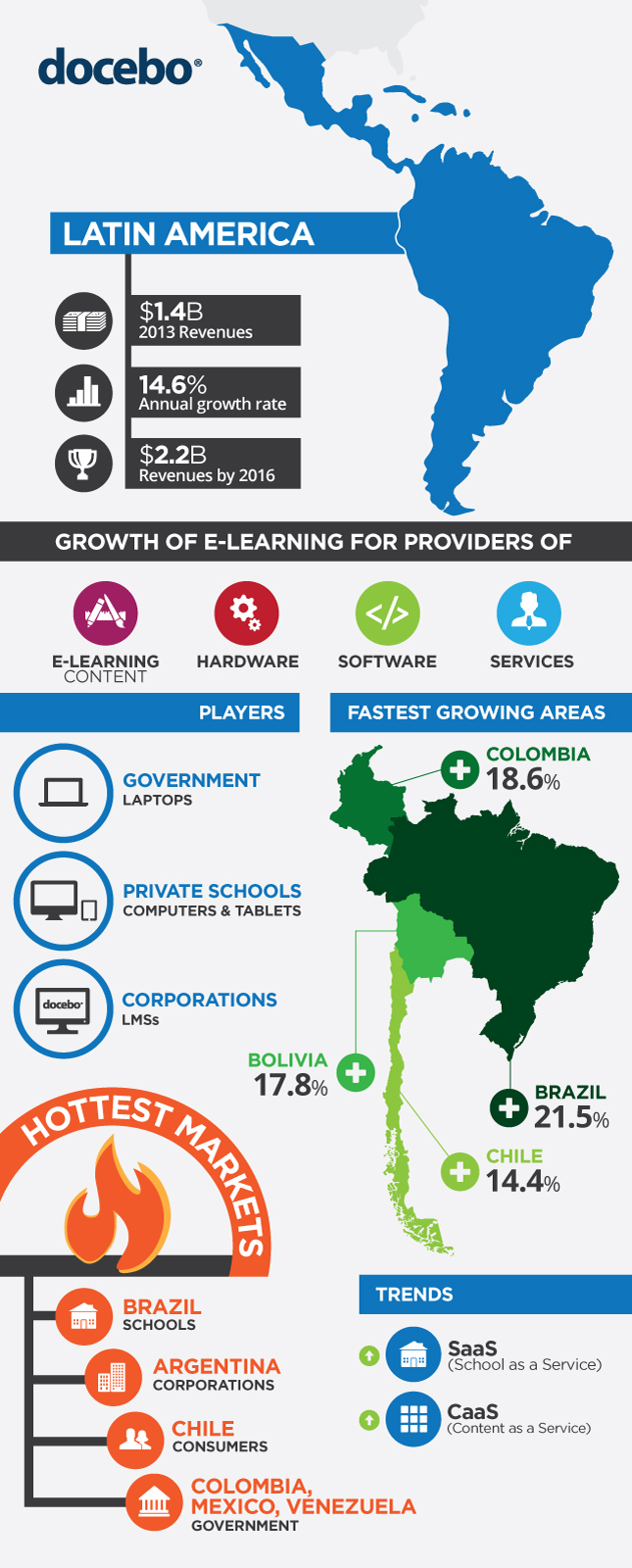2014-2016 E-learning Market Trends — Latin American E-learning Market
This is our third stop of 2014-2016 E-learning market,in the previous two articles,we mainly covered European E-learning market and North American E-learning market. In today’s article,we will continue with Lain American E-learning market,let’s took a look.
The e-learning market is growing fast across Latin America. Opportunities are arising for suppliers of e-learning content,hardware,software and services. Governments are handing out laptops to students; private schools are asking their ranks to bring in their own computers,tablets or other devices and corporations are rolling out E-learning platforms for employees to improve their skills.
Sam Adkins,chief research officer at Ambient Insight,has estimated that E-Learning revenues in Latin America will
almost double to $2.29 billion in 2016 from $1.16 billion in 2011. That’s equivalent to an annual growth rate of 14.6%.
In general,as in 2011,Latin America is largely a “consuming” region,importing the majority of its E-Learning content and technology from outside the region. This is likely to change over the forecasted period as domestic suppliers continue to gain market share.

Brazil will grow fastest at 21.5%,trailed by Colombia at 18.6%,Bolivia at 17.8% and Chile at 14.4%.
While schools are on top in Brazil,corporations dominate e-learning in Argentina,consumers do in Chile and governments in Colombia,Mexico and Venezuela.
The forecast for the next 3 years is that big foreign suppliers will dominate the e-learning business in Latin America,including by buying domestic suppliers to gain market share. In the larger Markets (Argentina,Brazil,Mexico and Venezuela) the international suppliers will find themselves slugging in out on price to sustain sales. The alternative for the smallersuppliers will be to focus on smaller regions (such as Colombia,Chile or Bolivia) offering tailored solutions that fit the specific customers needs.
A growth in CaaS (Content as a Service) and SaaS (School as a Service) solutions is also expected,following the latest trends in the United States.